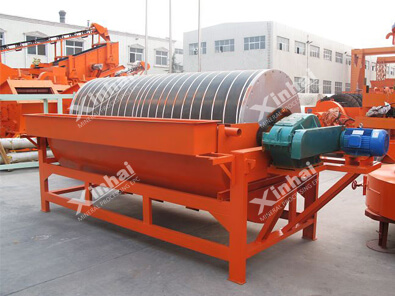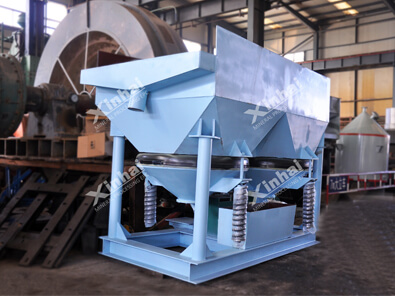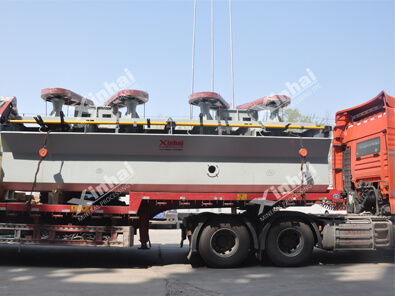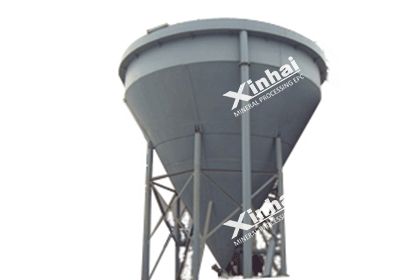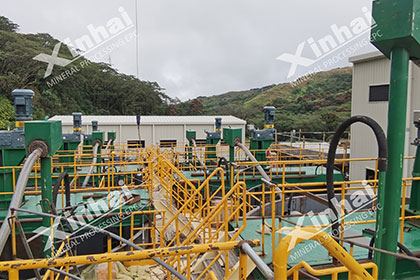How to Extract Iron from Iron Ore?
 Shirley
Shirley
 Sep 23, 2022
Sep 23, 2022
 1353
1353
If you want to know more details about equipment, solutions, etc, please click the button below for free consultation, or leave your requirements!
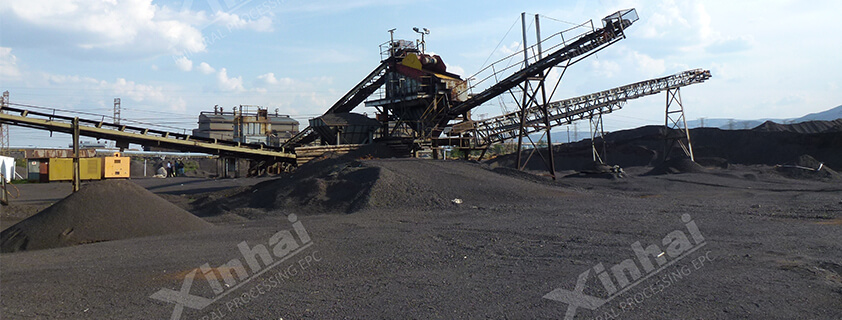
(Iron ore processing plant in South Africa)
According to chemical composition classification, common iron ore mainly includes magnetite, hematite, limonite, siderite and vanadium-titanium magnetite. Before we have talked about how to do iron ore beneficiation test. This article will explain how to extract iron from iron ore.
01 Magnetite Magnetic Separation Process
BackAccording to the different types of iron-containing minerals, magnetite can be divided into single magnetite and polymetallic magnetite. Generally, single magnetite ore is often separated by weak magnetic separation, while multi-metal magnetite ore is usually separated by a combined process.
1. Single magnetite beneficiation process
Most of the iron minerals in a single magnetite are magnetite, which is simple in composition, strong in magnetism, easy to grind and easy to select, we often use weak magnetic separation to separate it.
2. Polymetallic magnetite ore beneficiation process
The gangue of polymetallic magnetite often contains silicate or carbonate minerals, associated cobalt pyrite, chalcopyrite and apatite, etc. Generally, we use the weak magnetic separation-flotation combined process, that is, use weak magnetic separation process to recover iron, and then use flotation process to recover sulfide or apatite.
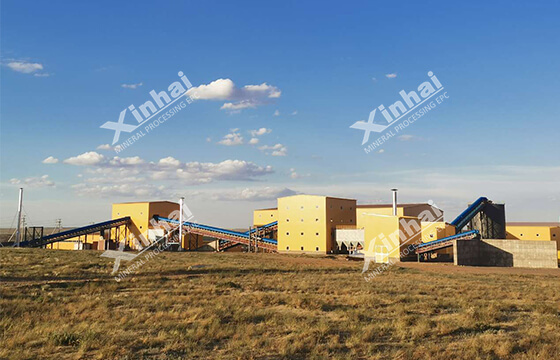
(3500tpd iron mining and processing plant)
02 Hematite Beneficiation Process
BackAs weak magnetic iron ore, hematite contains a small amount of magnetite and has uneven distribution of impurities and a large number of fine particles. Its properties are more complex. We often adopt gravity separation, flotation, magnetic separation and their combination for hematite separation.
1. Hematite Gravity Separation Process
There are two main processes of hematite gravity separation: coarse-grained gravity separation and fine-grained gravity separation. Among them, the coarse-grained gravity separation is suitable for the hematite ore deposits with high geological grade (about 50%), but the ore body is thinner or there are more interlayers, and the waste rock is mixed with hematite which depletes the ore. This kind of ore can be crushing without grinding. In the case of coarser particle size, coarse-grained tailings can be discarded through the gravity separation to recover the geological grade. The fine-grain gravity separation is mostly used to process hematite with finer grain size and high magnetic. After crushing, the minerals are grinded to achieve monomer separation, and then the fine-grained high-grade concentrate is obtained through gravity separation.
However, most of the weak magnetic iron concentrate obtained by strong magnetic separation is of low grade, and the unit processing capacity of the gravity separation is low, so we often adopt strong magnetic separation and gravity separation combined process. The strong magnetic separation is first used to discard a large number of unqualified tailings, then process strong magnetic concentrate by the gravity separation to improve the grade of the concentrate.
2. Hematite Flotation Process
The flotation process is mainly used for the separation of fine and micro-grained weak magnetic hematite ore, including positive flotation and reverse flotation. Commonly used flotation reagents include animal and vegetable fatty acids (soap), oxidized paraffin soap, crude tal oil, chlorinated acid, kerosene, sodium petroleum sulfonate, corn starch, etc.
In terms of the properties of hematite ore, reverse flotation has more advantages than positive flotation. Because the reverse flotation process collects gangue, but the positive flotation process collects iron minerals, it is difficult to obtain high-quality hematite concentrate for minerals with much gangue mineral.
3. Hematite Combined Process
Hematite Weak-Strong Magnetic Separation Process
Some hematite ore contains a small amount of magnetite, and its strong magnetic minerals can easily block the strong magnetic field separator. Therefore, it is usually necessary to add the weak magnetic separation before the strong magnetic separation to remove or separate the strong magnetic minerals in the ore. After thickening, adopting strong magnetic roughing and sweeping to process weak magnetic separation tailings and concentrating the strong magnetic rough concentrate by the strong magnetic separator. This method is suitable for processing low-grade magnet-hematite mixed ore.
Hematite Strong Magnetic Separation-Flotation Process
Under coarse grinding conditions, we adopt strong magnetic separation to recover fine-grained hematite minerals and discharge gangue minerals such as monomer quartz and chlorite Chlorite which is easy to be mud, which plays a dual role of desliming and discarding tailing and create better conditions for flotation. This method is mainly suitable for separating fine-grained hematite ore.
Hematite Strong Magnetic-Gravity Separation Process
For most weak magnetic hematite ore, we adopt strong magnetic separation to discard a large number of unqualified tailings and then adopt gravity separation to further separate hematite ore. The grade of concentrate obtained by strong magnetic separation alone is not high, and the minerals unit processing capacity by gravity separation alone is relatively low. Therefore, we adopt the combined process of strong magnetic separation and gravity separation to further improve the grade of concentrate. This method is suitable for the beneficiation of medium and high-grade hematite ore.
Hematite Roasting-Magnetic Separation Process
This method is to magnetically roast hematite ore to convert hematite or martite into magnetite, and then use a weak magnetic field magnetic separator for separation. It is suitable for complex mineral components and difficult to achieve the ideal concentrate grade of hematite by other process methods.
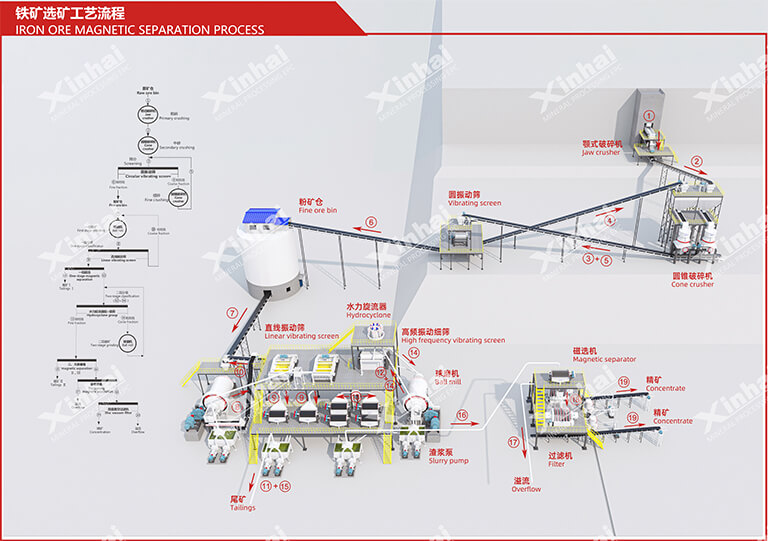
(Iron ore megnetic separation process)
03 Limonite Beneficiation Process
BackLimonite is a typical intractable iron ore, which has the characteristics of easy mudding and poor separation index. Common limonite beneficiation methods mainly include gravity separation, magnetic separation, flotation and combined process.
1. Limonite Gravity Separation Process
Generally, we adopt gravity separation to process coarse-grained limonite ore. In production, most limonite processing plants will use the washing-gravity separation process flow to separate limonite and martite. First step, we use the trommel screen washer, chute washer and scrubbing machine to wash the ore, then we use a heavy medium and jig machine and other gravity separation equipment for separation.
2. Limonite Magnetic Separation Process
The difference in iron content causes the difference in magnetism.
Generally, strong magnetic separation is used to separate limonite ore, but this method is not suitable for recovering fine-grained limonite ore (-20um iron minerals).
3. Limonite Flotation Process
The single flotation method has a better recovery effect on fine-grained iron minerals, but because the limonite ore is easy to mud, which seriously affects the flotation effect, it is possible to consider desliming or strengthening the dispersion of sludge before flotation.
4. Limonite Combined Beneficiation Process
Limonite combined beneficiation process mainly include gravity separation-strong magnetic separation, gravity separation-strong magnetic separation and gravity separation-strong magnetic separation.
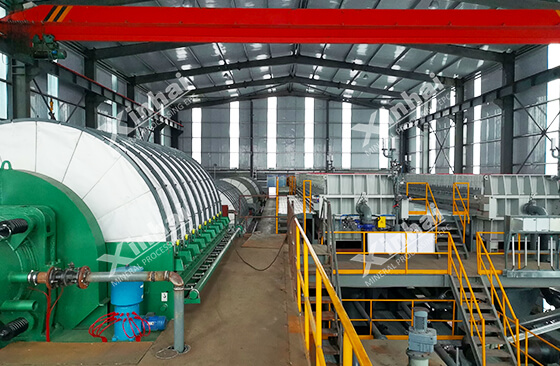
(3 milion tpa iron processing plant in China)
04 Siderite Beneficiation Process
BackSiderite is a common carbonate mineral with low iron content, usually in the form of granular, earthy or dense massive aggregates. As a common weak magnetic iron ore, siderite beneficiation is difficult. At present, there are 4 common beneficiation process methods, including gravity separation, strong magnetic separation, flotation, magnetized roasting-weak magnetic separation process.
1. Siderite Gravity Separation Process
The gravity separation process is suitable for the treatment of coarse and medium-grained siderite, and dense medium beneficiation and jig beneficiation are often used.
Dense medium beneficiation mainly uses dense and easy-to-regenerate solids (such as ferrosilicon, magnetite, galena) fine particles mixed with water to form a heavy suspension with adjustable density as the separation medium, The ore particles with a density greater than the medium density sink, and the ore particles with a density less than the medium float up, thus achieving the separation.
This method has a large production capacity, low investment, high separation accuracy according to specific gravity, and strong adaptability to the particle size of the selected ore.
Jig beneficiation is separating according to the density difference of the ore. The ore mixture is put into a vertically-lifting variable-speed medium flow for separation.
The jig has the characteristics of simple structure, low investment, high separation efficiency and high recovery rate. Under suitable conditions, it can remove about 80% of the waste rock in the siderite.
2. Siderite Strong Magnetic Separation Process
After crushing, screening, grinding and classifying, the siderite ore to be selected is sent to the cleaning tank and desliming tank for desliming treatment, and repeatedly enters the cleaning tank and desliming tank several times to obtain the deslimed siderite ore. The deslimed siderite ore is sent to a wet-type strong magnetic separator for separation, and output high-grade magnetic concentrate powder, low-grade magnetic tailing ore powder and medium-grade magnetic medium ore powder in three ways.
3. Siderite Flotation Process
The flotation process is mainly used for the separation of fine siderite ore, including two process flows: positive flotation and reverse flotation.
The positive flotation process is to grind the siderite ore to the required particle size and then deslime. The deslimed product is added with a fatty acid collector in a neutral or weakly acidic medium to float iron minerals (also known as acid positive flotation process).
In addition, we can also not deslime the ore after grinding, just add soda and other adjusting agents, use oxidized paraffin soap and tall oil as collectors in weak alkaline medium for flotation (also known as alkaline positive flotation process).
The reverse flotation process mainly includes anionic collector reverse flotation process and cationic collector reverse flotation process.
Anionic collector reverses flotation process is to add calcium salt to activate quartz in a strong alkaline medium, mix sodium hydroxide or sodium hydroxide and sodium carbonate, adjust the pH to above 11, use starch or lignosulfonate as iron mineral inhibitors, use fatty acids and their modified agents as collectors for flotation of quartz and other silicates.
The cationic collector reverse flotation process uses sodium carbonate to adjust the pH to 8-9, suppresses siderite minerals through starch, dextrin, tannin, etc., and floats quartz gangue with amine collectors.
4. Siderite Magnetized Roasting-Weak Magnetic Separation Process
Siderite is a carbonate of iron. After roasting in a neutral or weak reducing atmosphere, the carbon dioxide in the ore is decomposed, which improves the grade of the ore. The magnetism of iron minerals is obviously enhanced, while the magnetism of gangue minerals does not change much, so we can use weak magnetic separation method for separation.
Commonly used magnetization roasting methods mainly include reduction roasting, neutral roasting, and oxidation roasting.
Among them, the reduction roasting method is widely used, that is, using the shaft furnace (75-15mm) and the rotary kiln (15-0mm), and controlling the roasting temperature is controlled at 650-900℃ and the roasting time is as long as 6-8 hours and as short as 15-10 minutes.
Through this beneficiation process, siderite can be transformed into magnetite, and then separated by a weak magnetic field magnetic separator to obtain a higher-grade concentrate.
05 Vanadium Titanium Magnetite Beneficiation Process
BackVanadium-titanium magnetite is not only an important source of iron, but also associated with various components such as vanadium, titanium, chromium, cobalt, nickel, platinum group and scandium. It has a high comprehensive utilization value and can usually be divided into low-vanadium titanium magnetite and high-vanadium titanium magnetite.
1. Low-Vanadium Titanium Magnetite Beneficiation Process
The magnetic iron of low-vanadium titanium magnetite ore is between 4-8%.
At present, the commonly used beneficiation process is to crush the raw ore to about 3-5mm, using more crushing and less grinding, and the grinding process is basically the same as the conventional single magnetite process. Vanadium is mainly associated with titanium magnetite, and other associated useful elements are different. Some mine tailings use an extra flotation process for recovering copper, gold, silver, and cobalt.
If necessary, we can treat the weak magnetic separation tailings with a strong magnetic pre-selection to improve the grade of apatite selected, and the process of flotation and recovery of apatite.
2. High-Vanadium Titanium Magnetite Beneficiation Process
Similar to the process of recovering magnetite from a single magnetic mine, some mines use permanent magnet high gradient magnetic separation before grinding to discard waste, weak magnetic separation tailings to recover ilmenite. The recovery of ilmenite often adopts gravity separation, strong magnetic separation or combined processes to do pre-enrichment and uses flotation to improve the grade of concentrate.
06To Wrap Up
BackThe above introduce how to extract iron from magnetite, hematite, limonite, siderite and vanadium-titanium magnetite. If you want to customize an iron processing solution for your plant, you can contact the online service or submit your need, we will contact you soon.
 +86 183 3575 8886
+86 183 3575 8886 pinklaurabao@gmail.com
pinklaurabao@gmail.com




 Message
Message Chat Now
Chat Now


